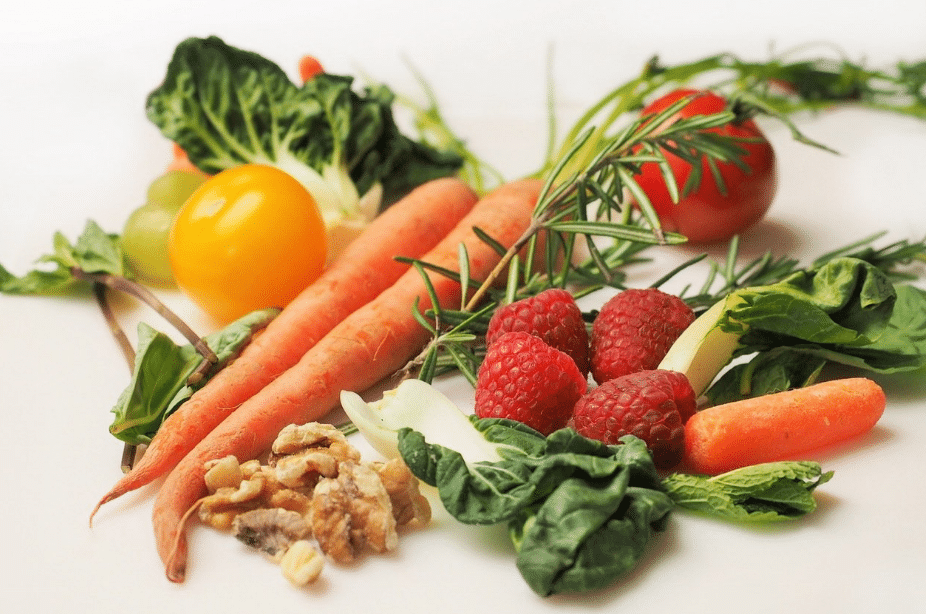The thrive diet is a raw, vegan lifestyle plan designed by former professional athlete Brendan Brazier. It’s outlined in his book of the same name, which provides readers with breakfast, lunch, dinner, smoothie, and snack recipes in addition to a 12-week meal plan to follow as they get started on the diet.
People who follow the Thrive diet don’t count calories or limit portions. Instead, they’re encouraged to eat several small meals daily to keep their blood sugar and energy levels consistent throughout the day.
The plan claims to aid in weight loss, energy levels, stress reduction, blood sugar stabilization, and cardiovascular health. It also claims to offer overall health benefits.

What Foods Are Eaten?
People on the thrive diet need to consume plant-based, whole foods that are raw or minimally cooked at low temperatures—in other words, foods that are as close to their natural state as possible.

On this plan, you’ll stick to nutrient-rich foods like:
- beans
- seeds
- leafy greens
- vegetables
- fruits
- hemp
- cold-pressed oils
- apple cider vinegar
- sea vegetables
- brown rice
Each meal should contain high protein, plenty of fiber, and healthy fats without any animal products.
The goal of this diet is to consume raw, vegan superfoods that deliver all the nutrients your body needs without the need for additional supplementation of vitamins, minerals, or nutrients.
If you’re planning to follow the thrive diet, you’ll find that there’s a long list of plant-based foods to keep you satisfied over the course of the day.
What Foods Are Avoided?
If you choose to follow the thrive diet, you’ll need to eliminate all animal products, including:
- meats (beef, pork, lamb, bison, etc.)
- fish (white fish, salmon, tuna, etc.)
- seafood and shellfish (shrimp, oysters, calamari, scallops, crab, etc.)
- eggs, poultry (chicken, turkey, etc.)
- dairy products (cheese, yogurt, milk, cream, kefir, etc.)
In addition, you’ll avoid refined carbohydrates and foods high in starch and sugar. You’ll also need to limit the foods that are cooked at low temperatures. While they’re allowed in small amounts on the thrive diet, frequent consumption is discouraged.
Finally, you’ll be encouraged to cut out or reduce processed foods as much as possible since many contain additives and are high in sugar, salts, and fats.
What Are The Potential Health Benefits?
People who eat plant-based diets are typically able to maintain healthier weights and have lower blood pressure and cholesterol than those who don’t. Vegan diets have been shown in some studies trusted Source to reduce the incidence of type 2 diabetes, high blood pressure, obesity, and death by cardiovascular disease, though larger trials need to be conducted to study the potential long-term health benefits in more depth.
A recent, small trial showed the vegan lifestyle to be effective at regulating blood sugar in people with type 2 diabetes, but more research is needed in that specific area. Read Also: How Wall Sits Can Help To Ease Your Lower Back Pain
Those who adopt plant-based distrusted Sources may also reap the added benefits of reducing the number of prescription medications they have to take, alleviating chronic health conditions, and lowering their risk of cancer.
Eliminating processed foods from your diet can reduce your intake of salt, sugar, and unhealthy fats plus strip away the artificial, processed ingredients that aren’t present in naturally occurring whole foods.
Brendan Brazier, the creator of the thrive diet, asserts that following the plan helps reduce stress and anxiety levels. However, these are anecdotal benefits that haven’t been supported by research.
What Are The Risks And Potential Side Effects?
People who switch to a vegan diet may find themselves at risk for nutrient deficiencies. This is particularly true for nutrients found in animal products, like iron, vitamin D, calcium, DHA, and vitamin B-12.
Although the thrive diet discourages supplementation, you may find that you need to supplement some of these nutrients in order to meet the recommended daily requirements.
As with any dietary change, integrate the thrive diet gradually into your lifestyle rather than make an extreme change all at once. Start by adding one or two thrive-approved snacks or meals at a time and then slowly work your way up to the full diet.
You may experience gastrointestinal distress (bloating, changes in bowel habits, etc.), irritability, and headaches as you make the changes, especially if you change too much in too short a period of time.
Who Should Try The Thrive Diet?
Individuals with high blood pressure, high cholesterol, cardiovascular disease, type 2 diabetes, chronic conditions, or who are obese may benefit from the Thrive diet.
Otherwise, healthy people who want to clean up their diets and derive more nutrients from the foods they consume may also benefit from adopting a vegan lifestyle like the Thrive diet.
People with thyroid disease trusted Source should be cautious when adopting a vegan lifestyle, as certain plants like corn, sweet potatoes, soy, and raw cruciferous vegetables are goitrogens and may exacerbate your symptoms.
Cooking these vegetables makes them safe for people with thyroid disease to eat, but since cooked vegetables are restricted on the thrive diet, those foods may need to be completely eliminated.
Additionally, people with kidney disease trusted Source who follow the Thrive diet should restrict foods with high amounts of phosphorus and potassium.
The Takeaway
Plant-based, whole-food, vegan diets like the Thrive diet may provide weight loss and health benefits to those who follow the lifestyle, including people with cardiovascular disease, type 2 diabetes, high blood pressure, and high cholesterol.
As with any lifestyle change, the thrive diet should be integrated gradually, approached with caution, and tailored to your individual nutritional needs.
How Much Does Thrive Cost Per Month?
What Do You Eat On The Thrive Diet?
What foods are eaten?
- beans.
- seeds.
- leafy greens.
- vegetables.
- fruits.
- hemp.
- cold-pressed oils.
- apple cider vinegar.
What Is In The Thrive Patch?
Is Thrive Food Healthy?